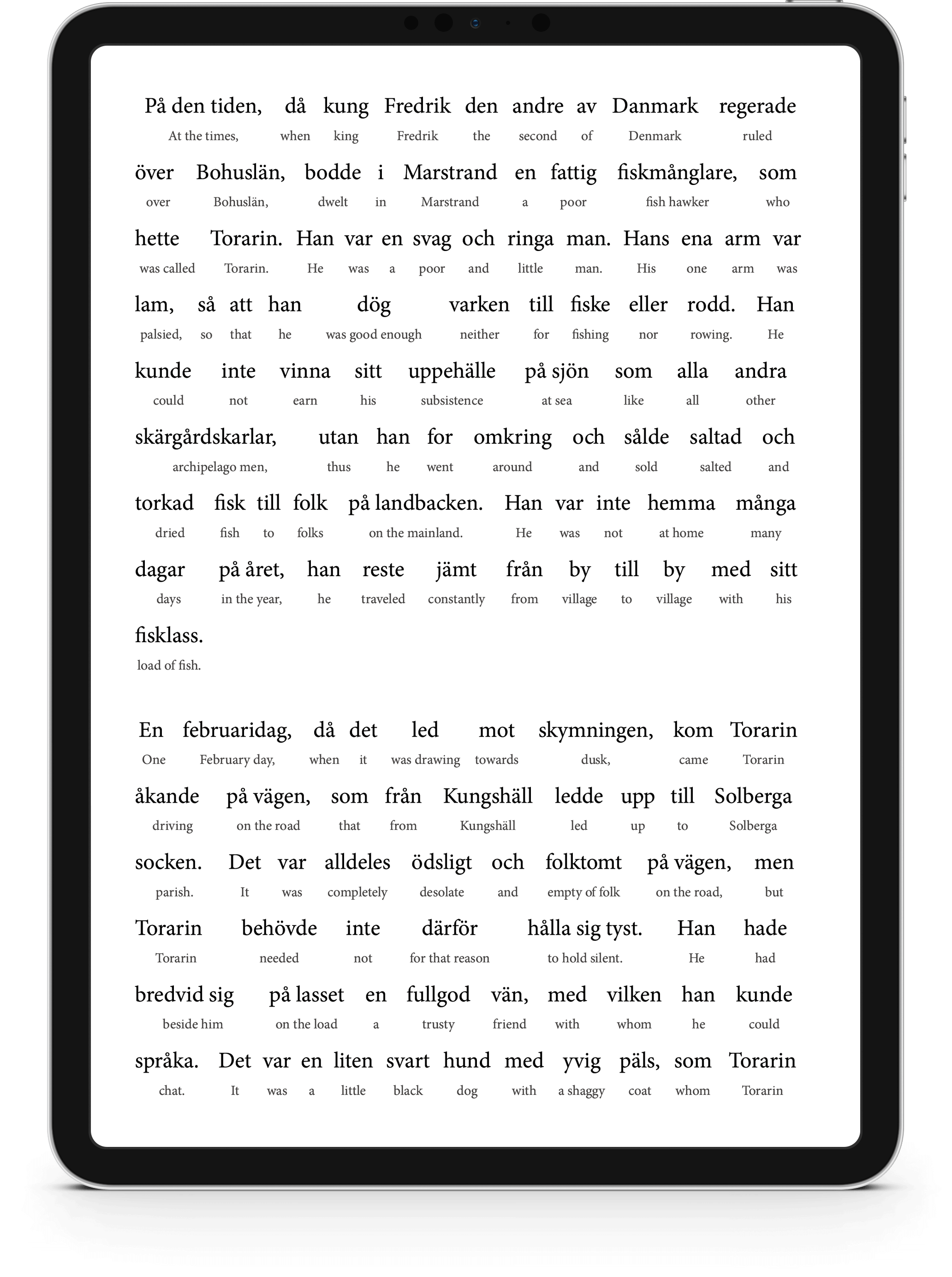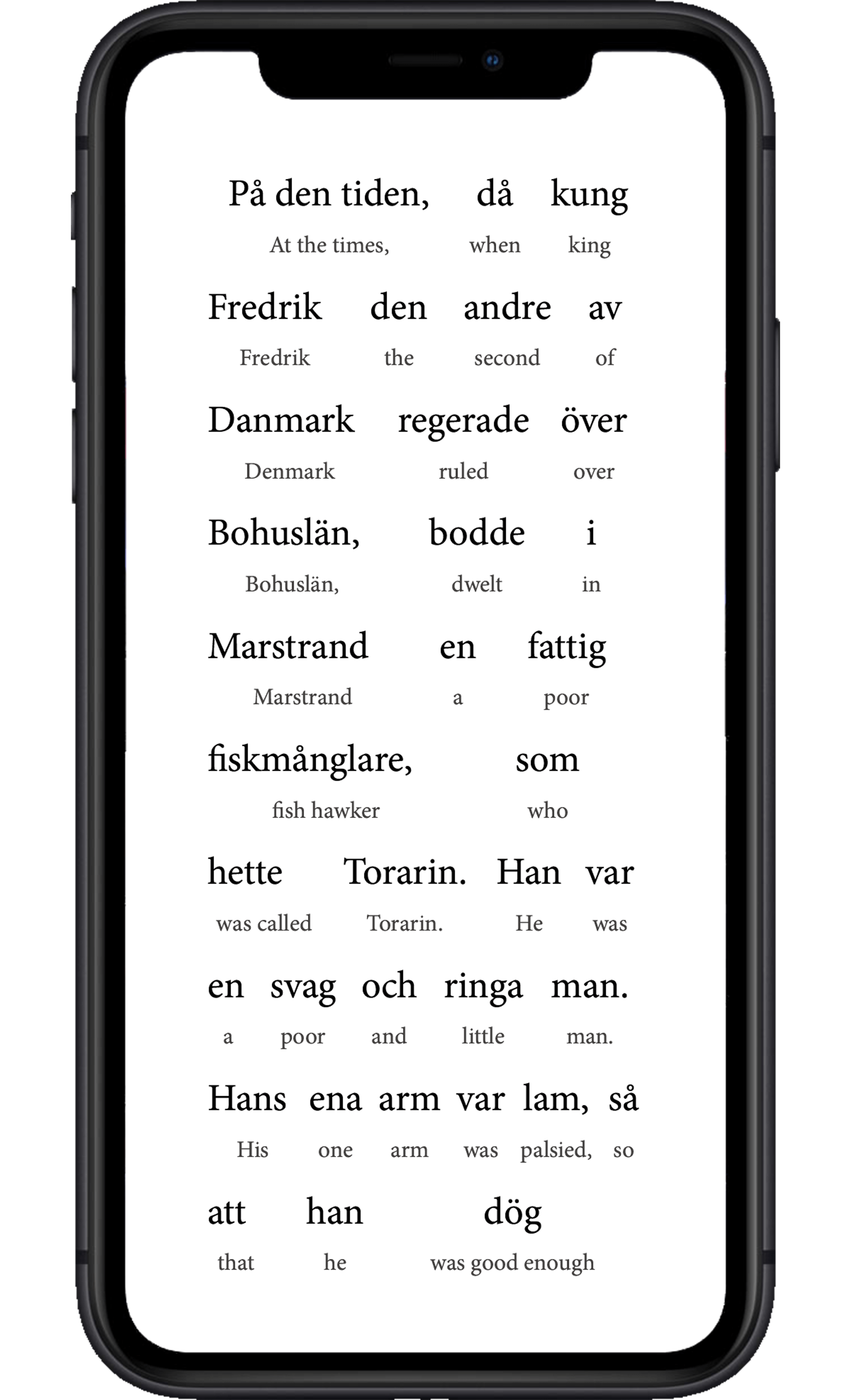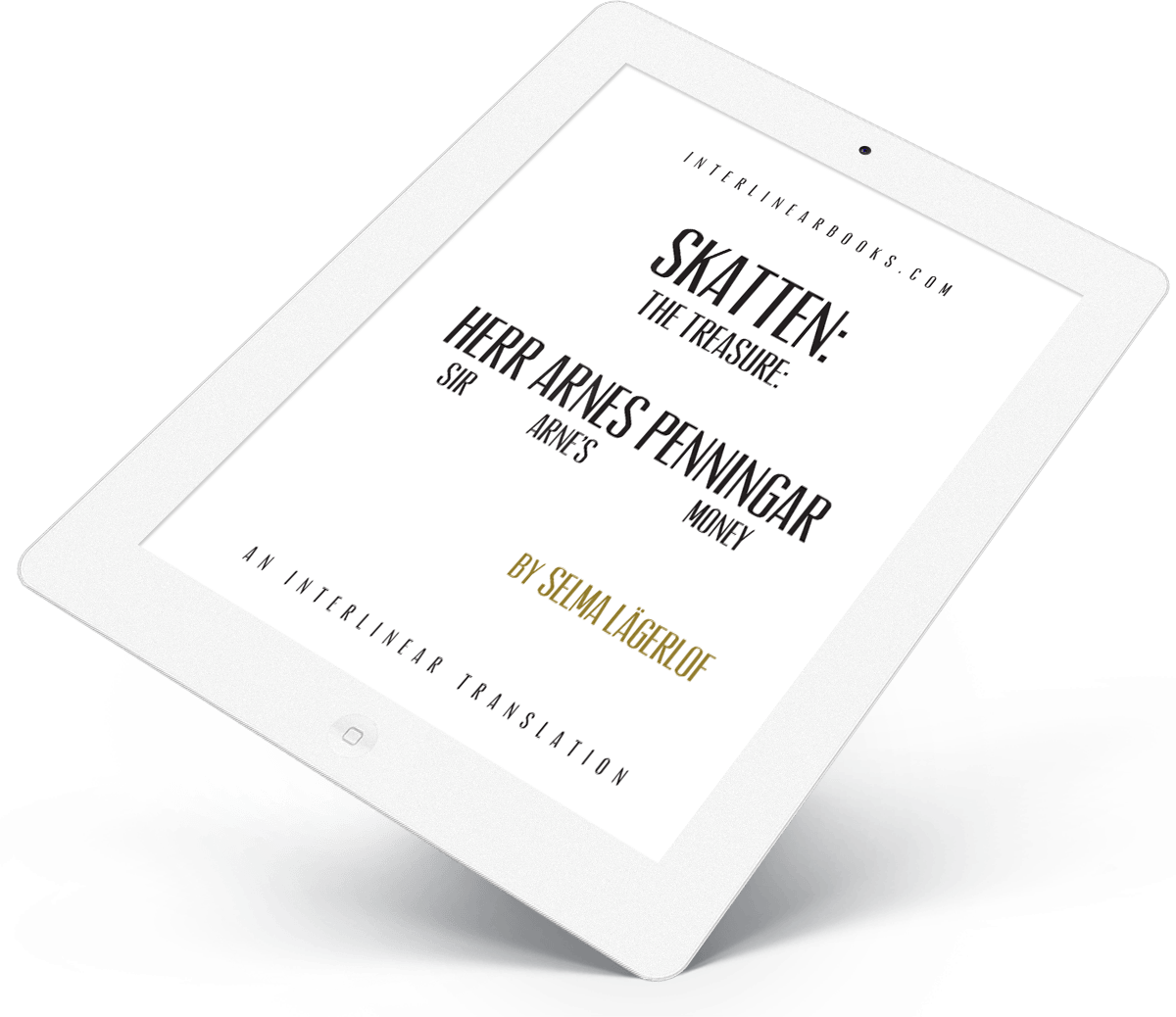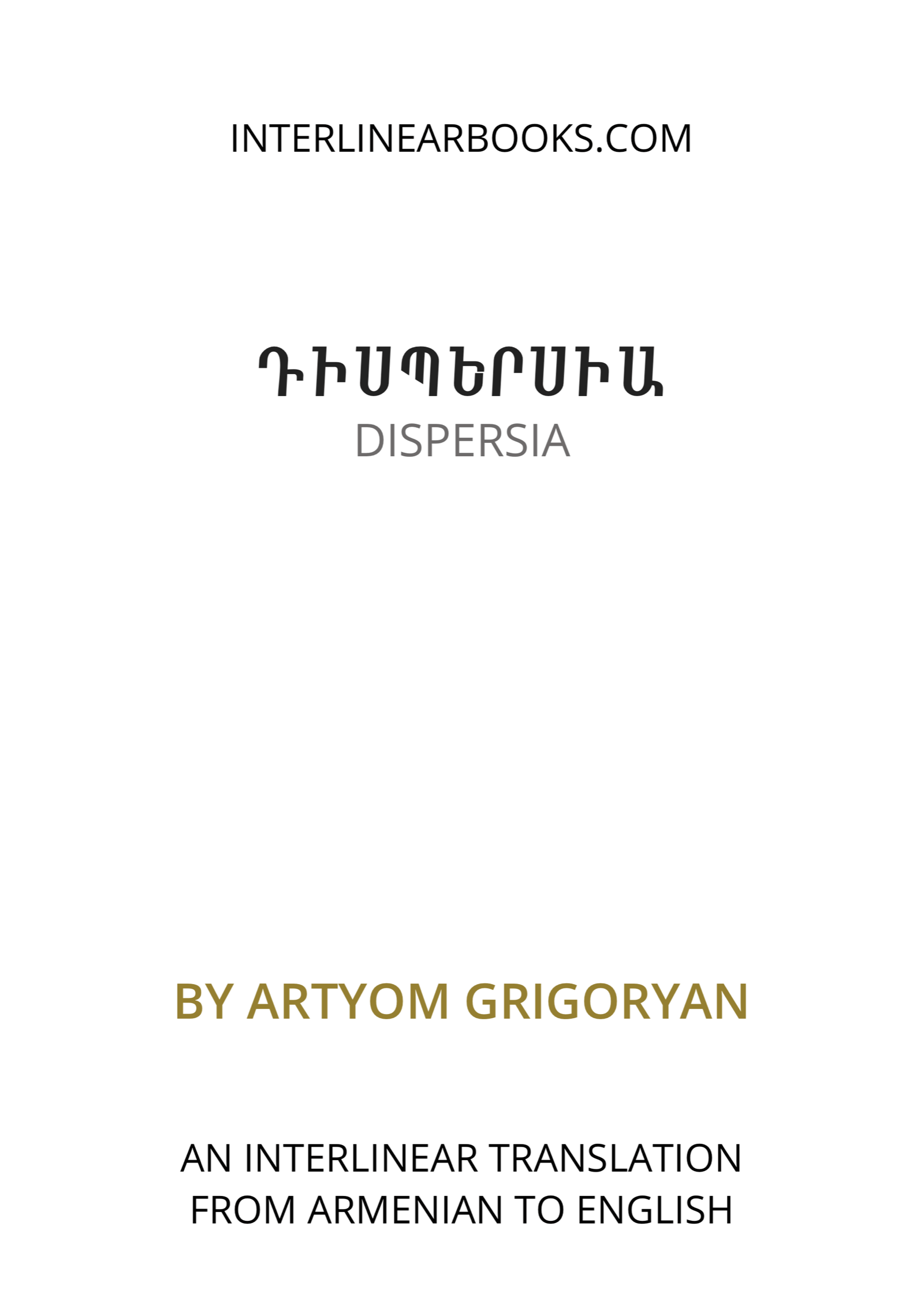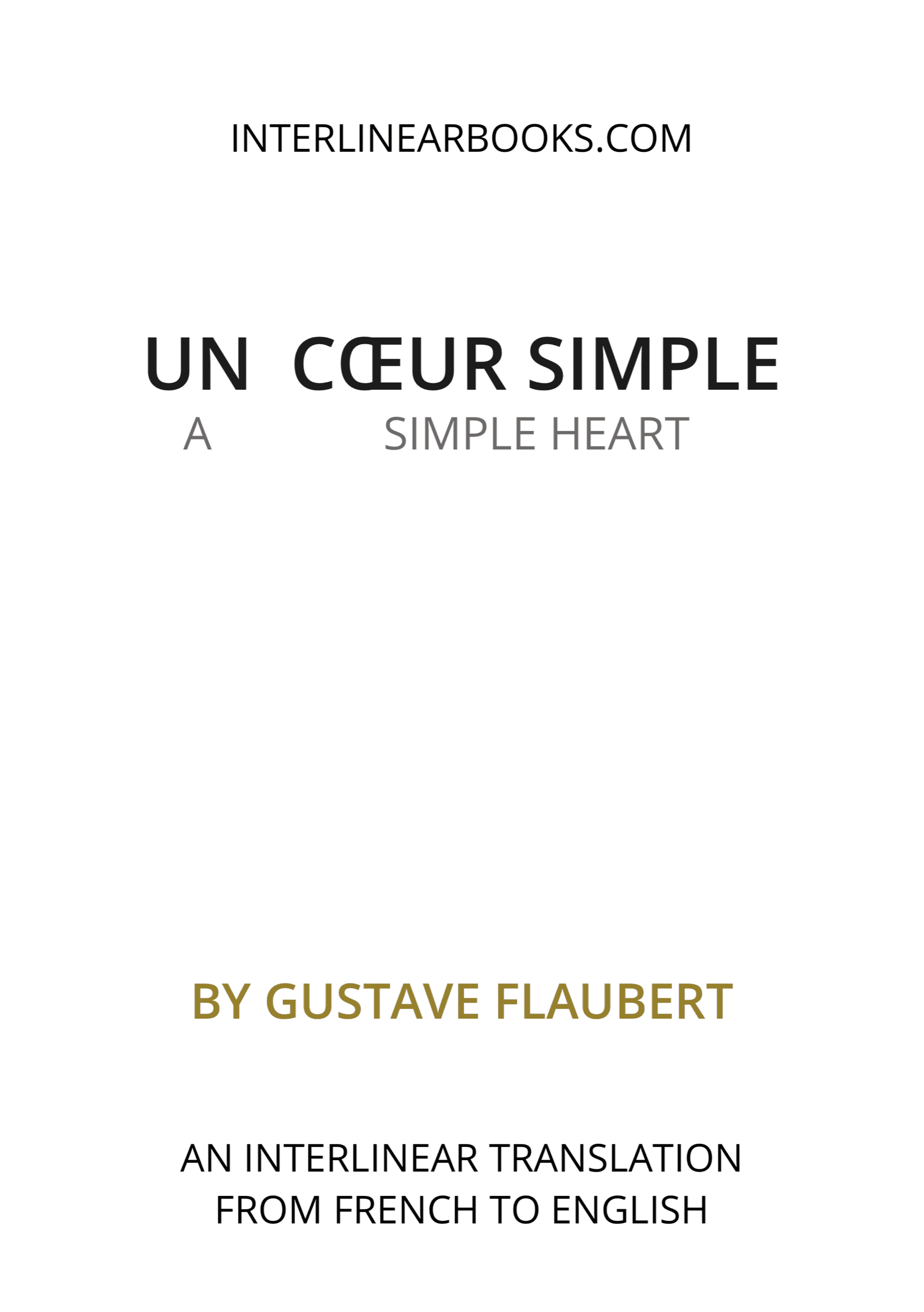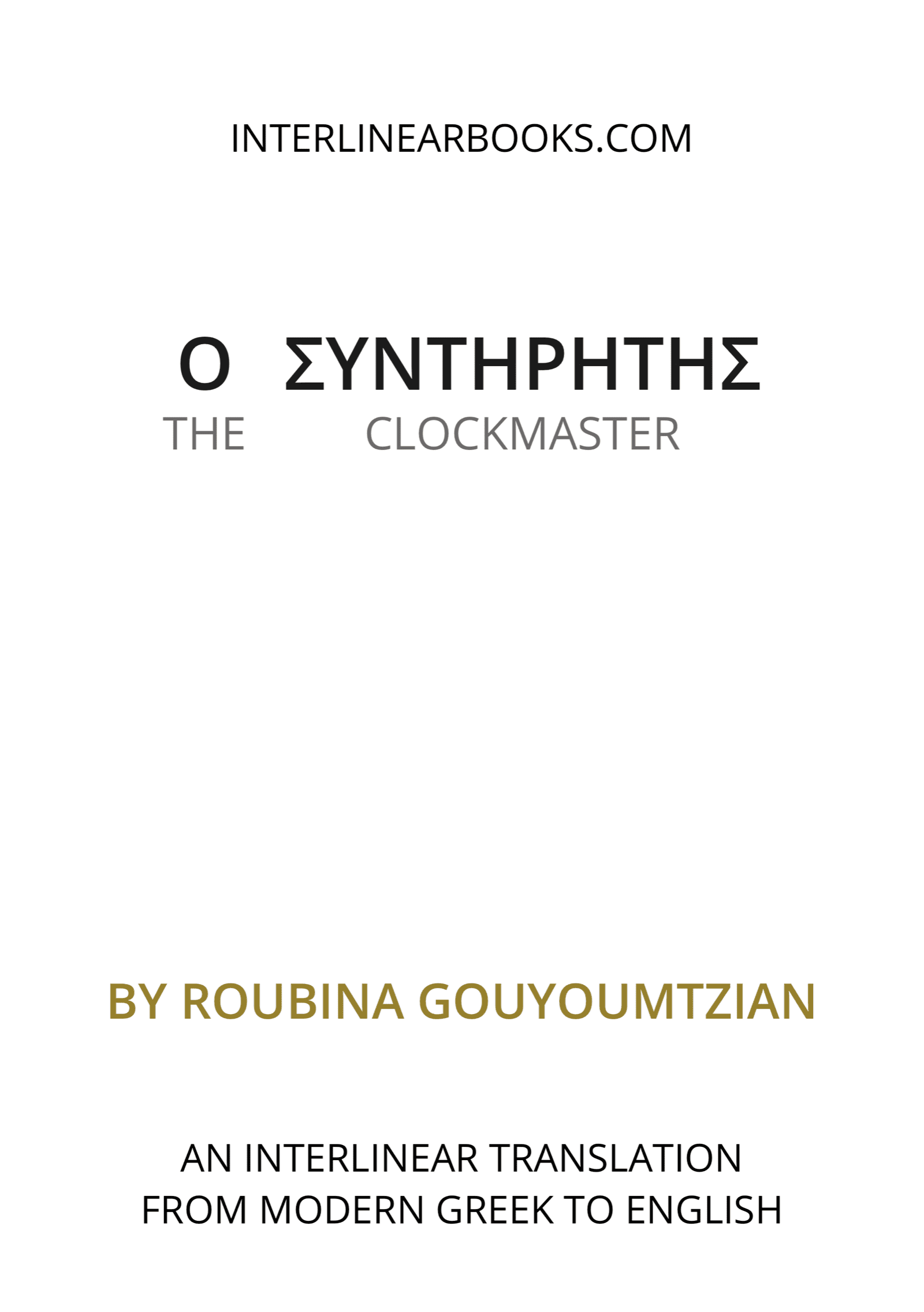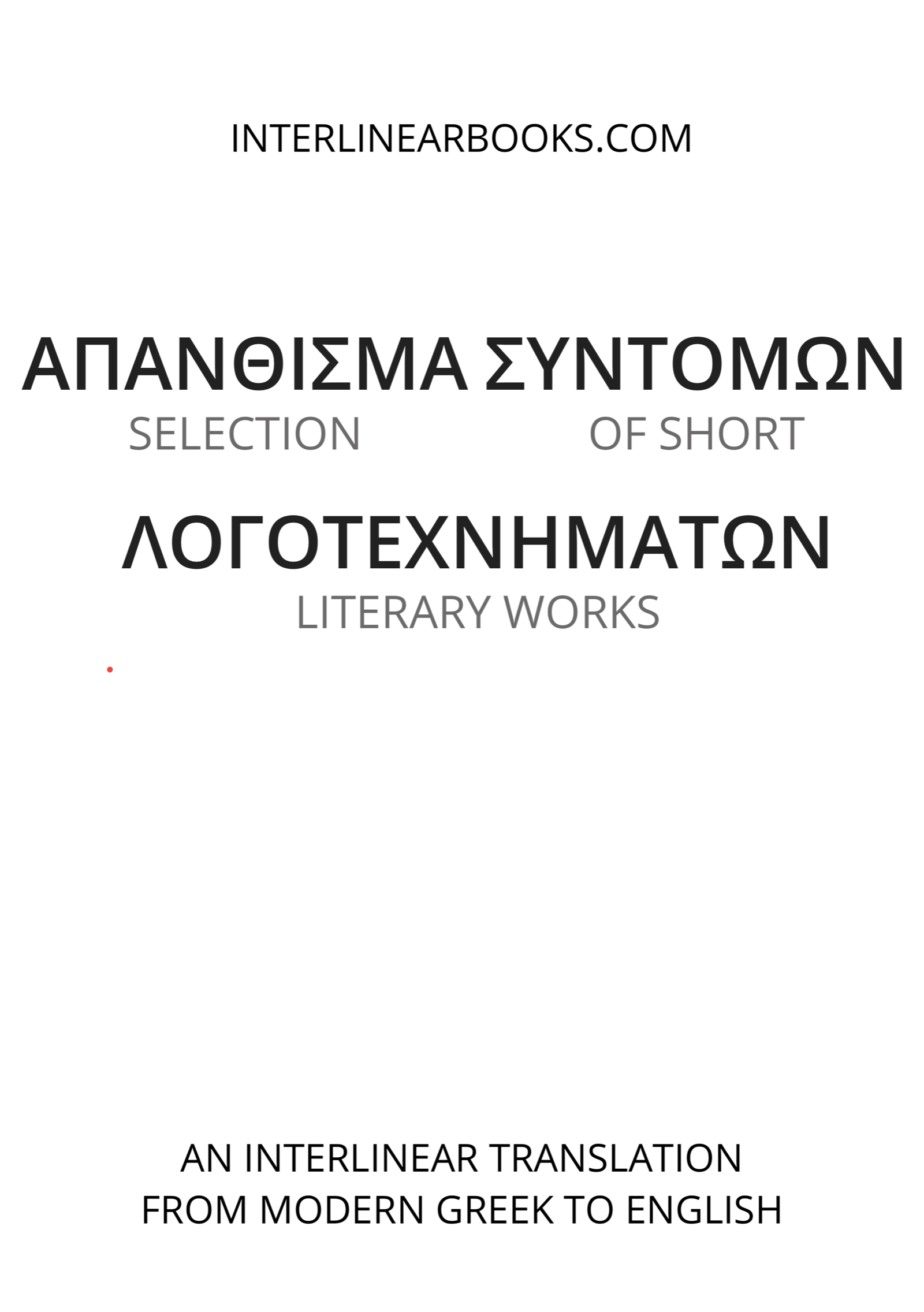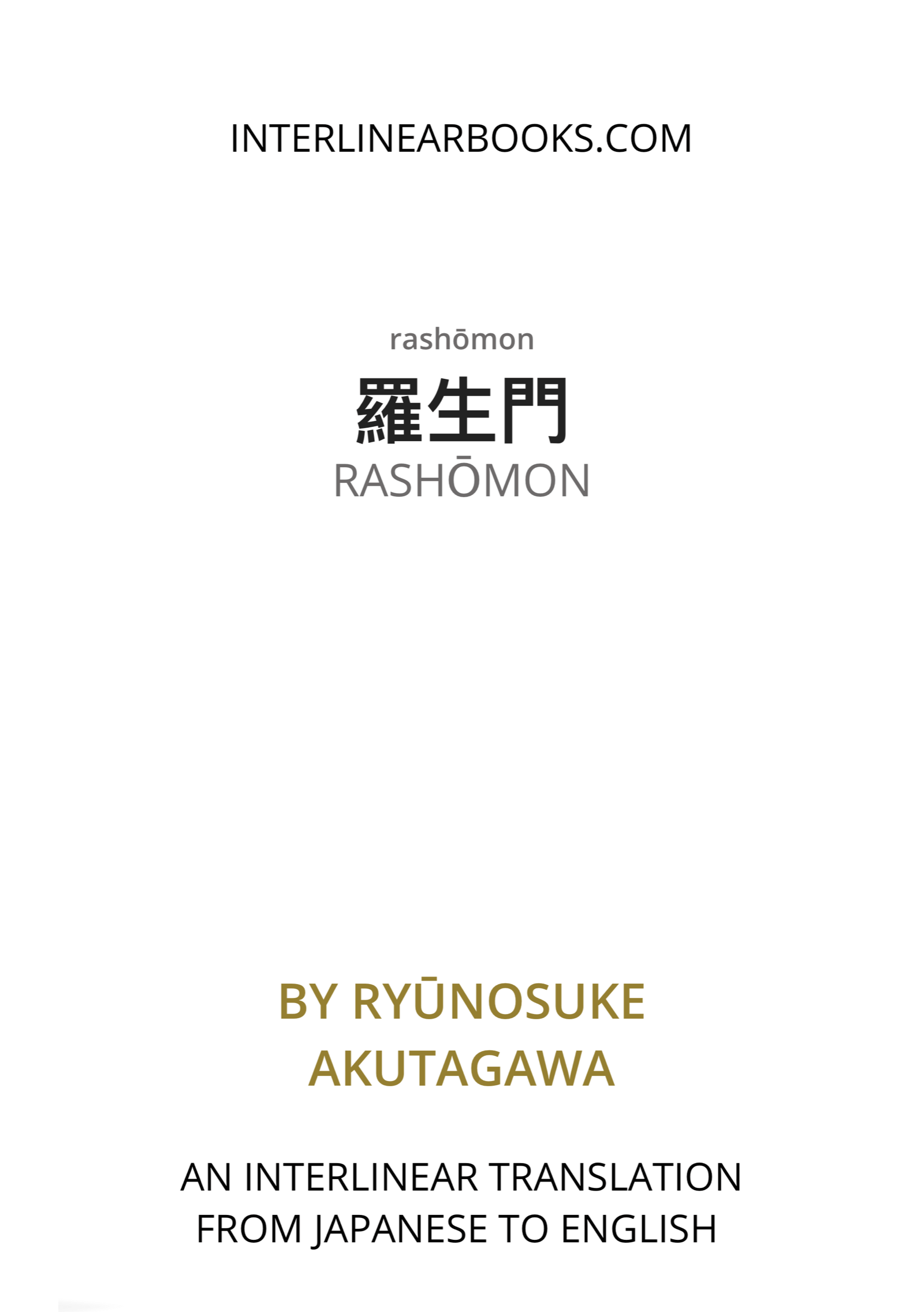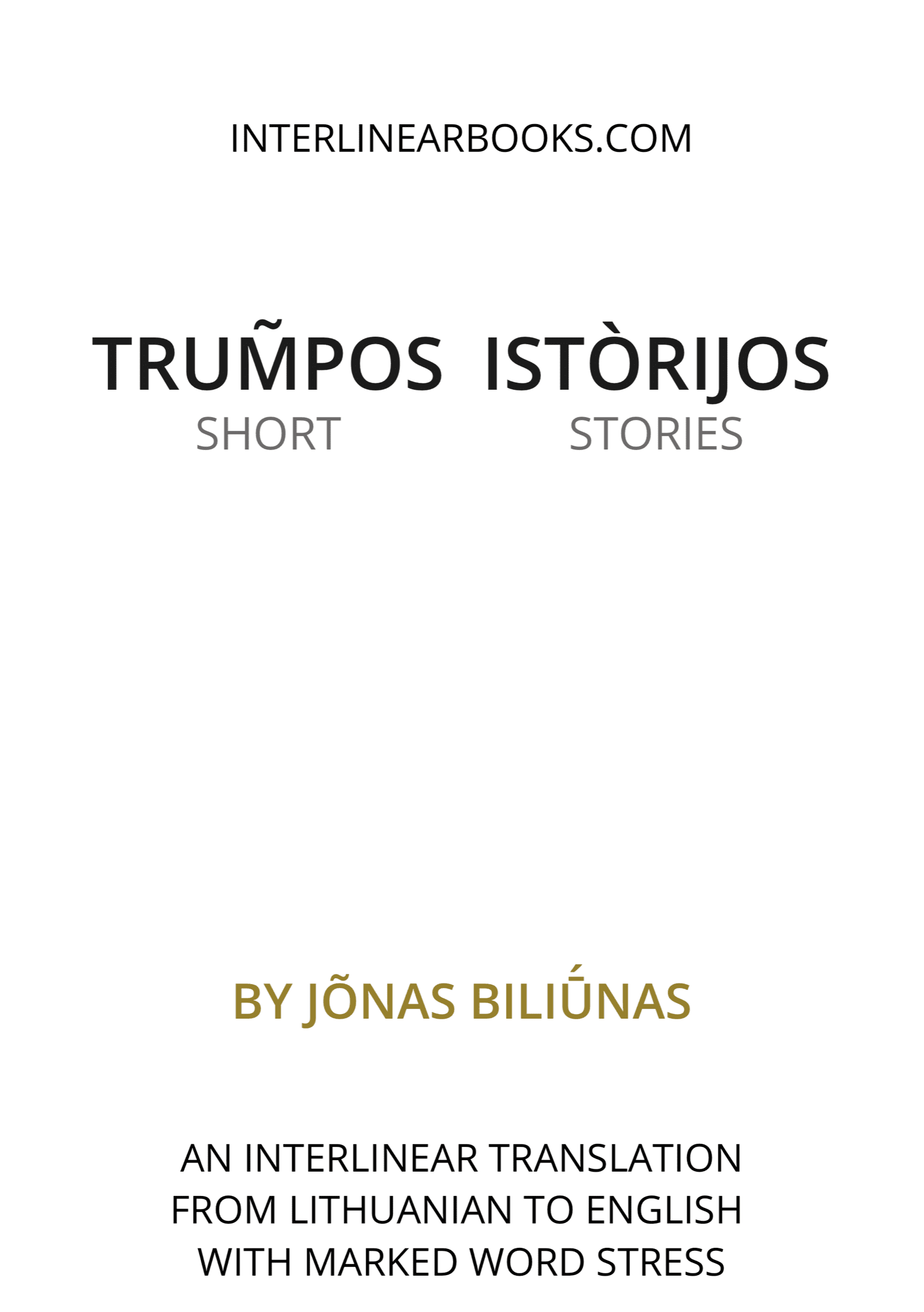- 130 standard-book pages
- over 15 thousand translated words and expressions
- the original text with modernized spelling and language & aligned Interlinear translations
- files in the printable/electronically readable PDF and EPUB formats as well as the MOBI format for Kindles
Read The Treasure: Sir Arne's Money by Selma Lagerlöf in Swedish
In Interlinear, the Swedish text is followed by an English translation below each word or phrase.
